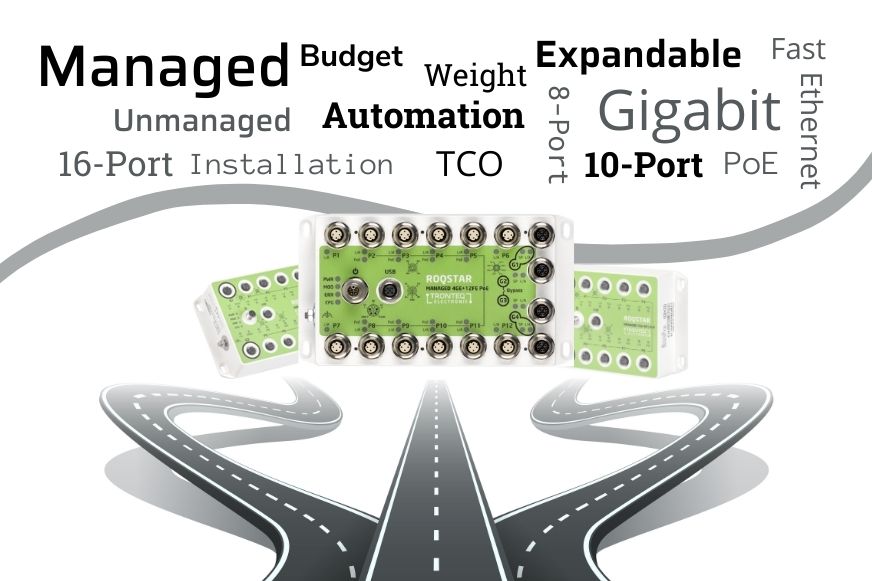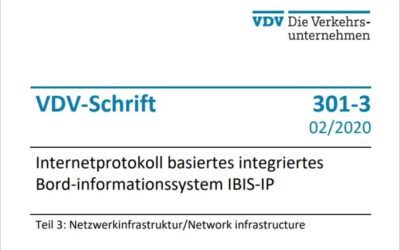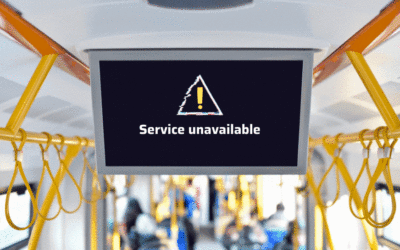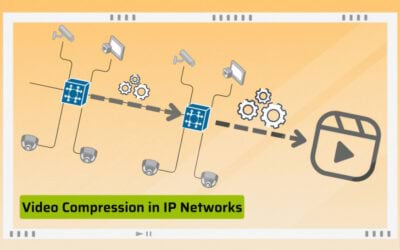How to Choose the Right Ethernet Switch for Public Transport

Standards in Public Transport
In addition to being approved for use in public transport via an E certification for road vehicles and EN for rail vehicles, an Ethernet switch should be able to integrate seamlessly into the IT system. This is the focus of the ITxPT (Information Technology for Public Transport) interoperability label, which has defined general requirements for IT systems in public transport. Devices with an ITxPT label communicate on the basis of standardized protocols. On the one hand, this saves the use of proprietary and manufacturer-specific software, and on the other hand, it ensures that data exchange between all onboard devices functions smoothly. Ethernet switches provide the infrastructure for data exchange.
Functionality First: Questions Regarding the Features of an Ethernet Switch
First and foremost, a switch should have all the functions required by the IP network. A network concept should be available for this. Once it has been determined how many and which devices will be installed in the vehicle and how, then decisions can also be made about the number and equipment of the switches.
Number of ports
The number of devices to be connected determines the number of ports. The ports of Ethernet switches can basically be either of the RJ45 or M12 type. The latter have proven to be much more robust under the special conditions in buses and the like.
Bandwidth
In larger, shared on-board networks, it can make sense to install and operate a Gigabit backbone in public transport vehicles. Video surveillance and public Wi-Fi in particular contribute to the increased bandwidth requirements. It makes sense to use Gigabit ports for this purpose. However, Fast Ethernet ports are sufficient for many of the common onboard devices, so we recommend switches with a combination of both port types.
Configuration options
The more complex an IP network, the greater the need to be able to monitor it and configure it according to individual requirements. So-called managed switches are ideal for this purpose. Settings for controlling and monitoring the network can be realized via a user interface in the web browser. It is also possible to retrieve information about the data communication. All this is impossible with unmanaged switches, which only perform their main functions.
Expandability
The purchase of Ethernet switches for use in public transport buses and trains is a long-term investment. Therefore, the devices should also be able to meet changing requirements. In terms of configuration options, expandable switches offer a good alternative to unmanaged switches. They are initially delivered with unmanaged equipment, but can be upgraded to managed switches at any time via firmware update if required.
Power supply
Classically, power is supplied to each device via a separate cable. But not if the Ethernet switch has a PoE (Power over Ethernet) function. In this case, the switch serves as the power source – only the usual network cable is needed. Transportation companies can save time and money this way.
Size and weight
Two criteria that are also important from a technical perspective are the size and weight of the onboard devices. Switches also come in different varieties. More compact models are always preferable in view of the tight space conditions in buses and trains. Weight is also increasingly playing a role with regard to green mobility. With their high port density, ROQSTAR switches from TRONTEQ are frontrunners in terms of both size and weight.
Other Criteria to Consider in the Decision Making Process
Budget
Budgets are often tight, and especially operators that rely on public funding know this very well. But even when choosing the right Ethernet switch, it’s not necessarily a good idea to go for the cheapest solution. Much more important, and also recommended by the ITxPT organization, is the overall relationship between price and performance, or the total cost of ownership (TCO). Thus, a supposedly low-priced offer may become expensive in the long run due to frequent maintenance and repair work. As Ethernet switch specialists, we at TRONTEQ are committed to providing the best quality and services at the best possible price.
Degree of innovation
a.In public transport, there is a need for technical expertise and innovation to optimally design and successfully implement the digitization of public transport. In particular, the technology of network infrastructure is still relatively new in this industry. To support public transport operators in this change, we at TRONTEQ develop ideas and concepts on how to make the deployment of Ethernet switches easier, faster and more user-friendly. Since our focus is solely on the Ethernet switch, we are constantly working on new, innovative solutions that affect all processes related to switch operation. Currently, we are offering new capabilities for faster automated switch configuration.
More Stories Like This:
What Role Does the Network Play for the IBIS-IP / VDV 301 Standard?
Digitalization in the transportation sector requires the transfer of ever-increasing amounts of data, pushing the existing serial communication to its limits. As an IP-based data transmission solution, IBIS-IP provides an efficient alternative.The...
Preventing System Failures in Public Transport Vehicles: Role of Ethernet Switches
In digitalized buses and trains, data is of enormous importance for both transport operators and passengers. Therefore, system failures in public transportation require special attention. Network switches act as unsung heroes here, preventing or...
IP Cameras and Network Topology Design: Optimizing Compression for Efficient Data Handling
IP cameras are widely used in public transport vehicles, enhancing onboard safety and security. ROQSTAR Ethernet switches seamlessly integrate with these cameras, ensuring optimal functionality and data transmission. However, IP cameras contribute...










